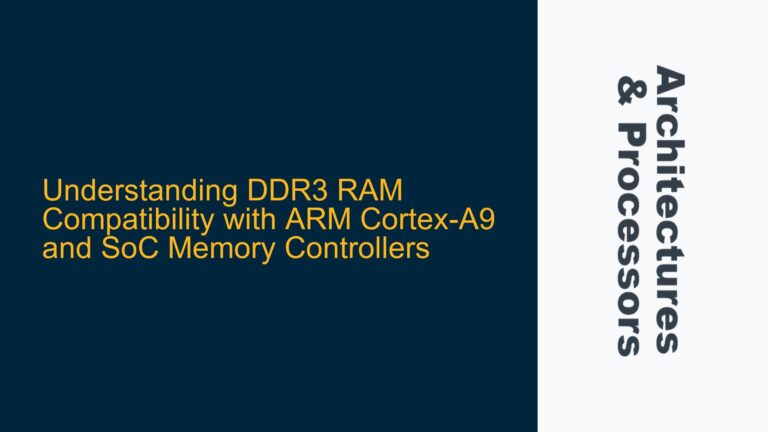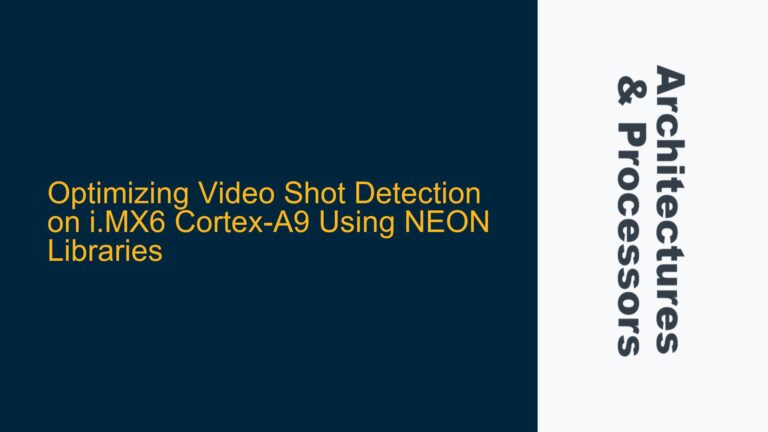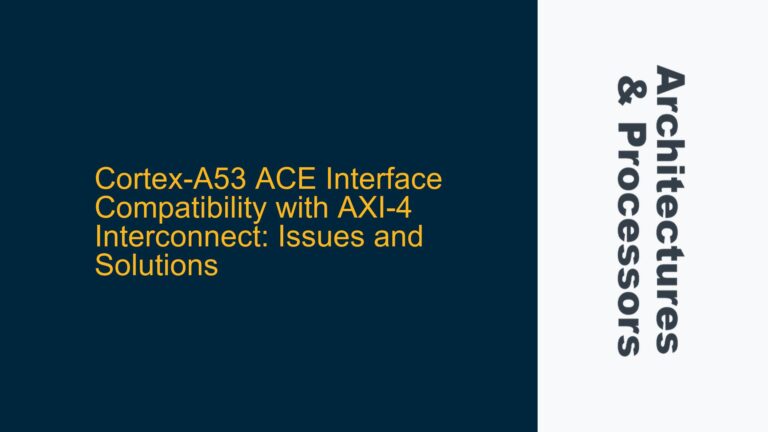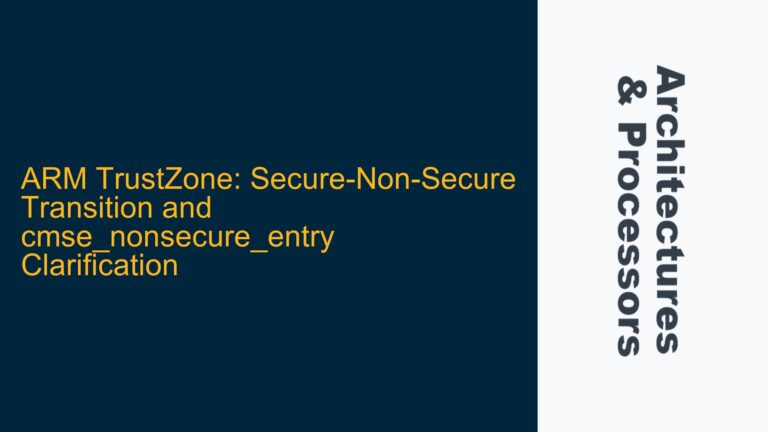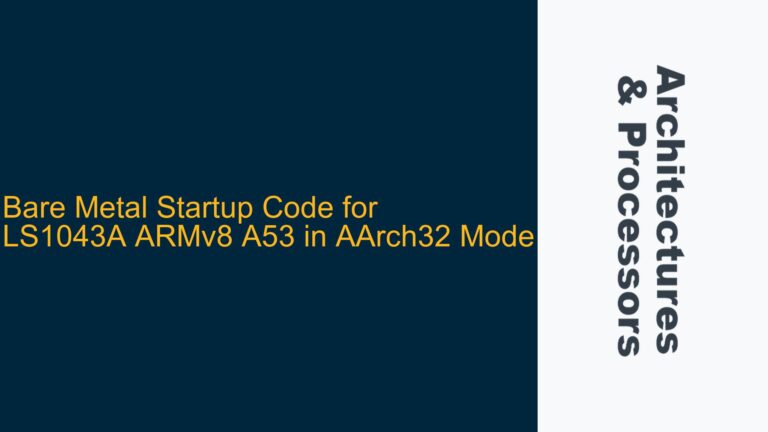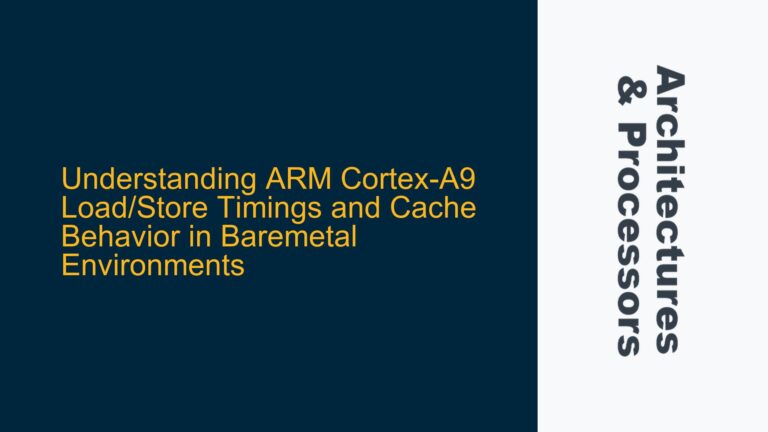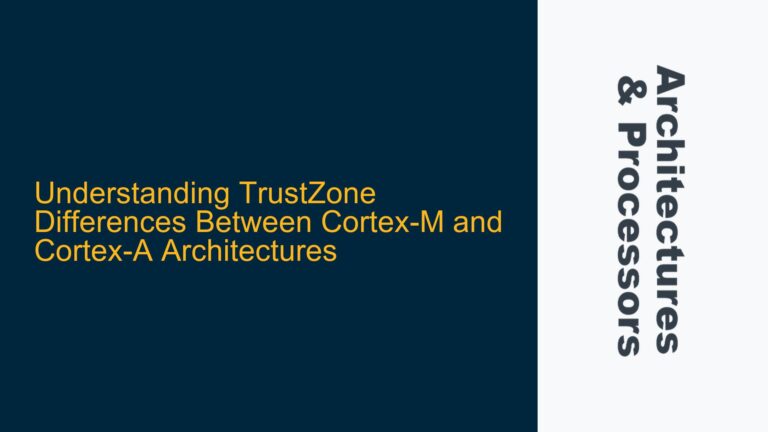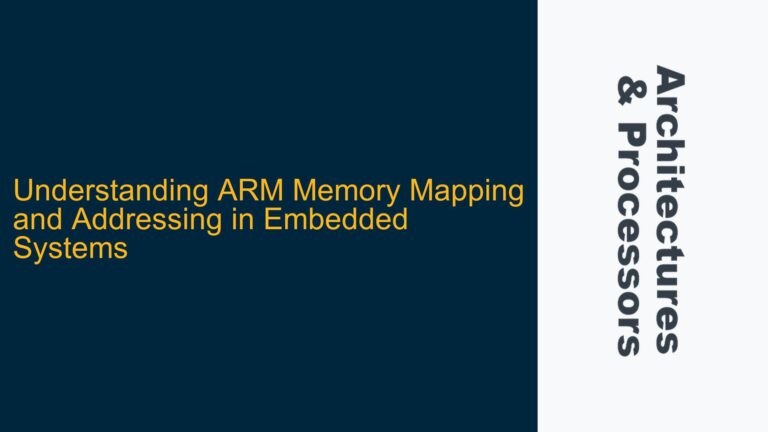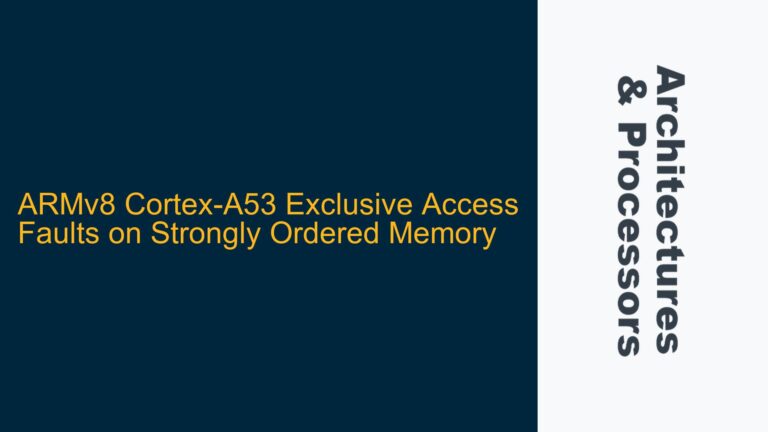DDR3 RAM Compatibility with ARM Cortex-A9 and SoC Memory Controllers
DDR3 RAM Compatibility with ARM Cortex-A9 and Memory Controller Integration The compatibility of DDR3 RAM with an ARM Cortex-A9 processor or any ARMv7-A architecture-based system is not a direct relationship between the processor core and the memory itself. Instead, it is mediated by the memory controller integrated within the System on Chip (SoC). The ARM…
